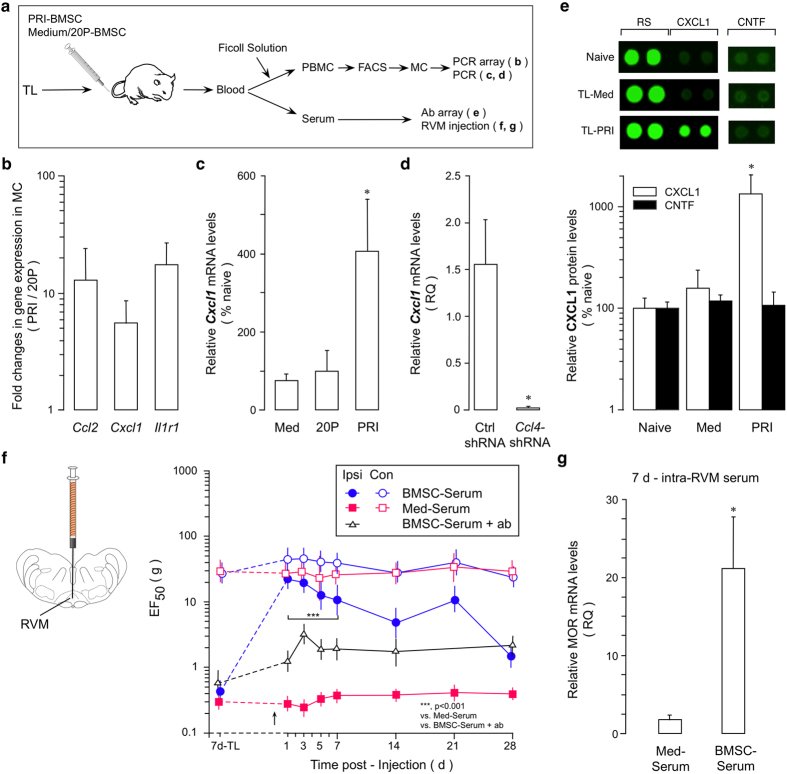Figure 4.
CXCL1 and antihyperalgesia. (a) Flow chart of the experiment. (b) The Rat Inflammatory Cytokines PCR Array revealed an upregulation of three genes in MC purified at 1 d after treatment with PRI BMSC in 7d-TL rats, compared to that of 20P-BMSC-treated rats. (c) q-PCR confirmed the upregulation of Cxcl1 in MC. Compared to medium-(Med) and 20 P BMSC treatments, PRI-BMSC induced an increase in Cxcl1 mRNA levels. *p < 0.05, vs. Med and 20 P, n = 3. (d) Cxcl1 mRNA expression was reduced in MC of rats treated with BMSCs transduced with Ccl4 shRNA lentivirus, compared to Ctrl shRNA treatment (n = 3, RT-qPCR). *p < 0.05, vs. ctrl shRNA. (e) Antibody array (ARY008, R&D) was performed on serum isolated from naïve, medium- or PRI BMSC-treated rats. There was an increased CXCL1 expression in PRI-BMSC-treated rats. CNTF (ciliary neurotrophic factor) was an example of proteins that did not show changes in expression. RS, reference spot, coated with an irrelevant biotinylated protein to show Streptavidin-HRP reaction. *p < 0.05, vs. Naïve and Med, n = 3. (f) Direct injection of serum (Arrow, 0.5 μl) isolated from BMSC-treated animals (BMSC-Serum) into the RVM attenuated behavioral hyperalgesia in TL rats, as compared to serum from medium-treated rats (Med-Serum). Incubation of BMSC-Serum with anti-CXCL1 antibody (ab) attenuated its antihyperalgesic effect. ***p < 0.001, vs. Med-Serum and BMSC-Serum + ab, n = 5-6/Group. (g). RVM MOR mRNA levels were increased in rats treated with serum isolated from BMSC-treated TL rats, compared to Med-Serum-treated rats. Sample taken at 7 d post-serum injection. *p < 0.05, n = 3. Statistics: (b,c,e) One-way ANOVA followed by post-hoc comparisons with Bonferroni corrections. (d,g) Unpaired, Two-tailed Student’s t-test. (f) Two-way ANOVA followed by post-hoc comparisons with Bonferroni corrections.

